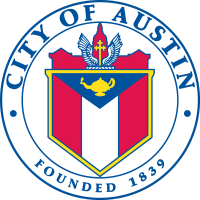Spirit of East Austin Ideas & Discussion
Spirit of East Austin Ideas & Discussion
We need your input to ensure proposed Spirit of East Austin programs, policies, and strategies represent the best ideas to achieve fair, impactful change, and ongoing economic development in the Eastern Crescent! Community members help shape and provide guidance on the ideas described below.
Austin remains a racially and economically segregated city. The Mayor and City Manager, along with Council Members Houston, Renteria, Troxclair, and Pool initiated the Spirit of East Austin to break down barriers to an equitable life for many East Austinites. The community provided a large number of ideas for consideration. The Eastern Crescent includes neighborhoods and connecting areas in central East Austin, Colony Park, Del Valle, Dove Springs, Montopolis and Rundberg areas focused on jobs, housing, mobility, education, health and wellness, public safety, and the environment.
The Spirit of East Austin is about fairness. Your input is important to identify the best ways to open economic opportunities to East Austin communities.
Please read all the descriptions below and scroll down to the bottom. Some ideas contain subsections, and we would like you to comment on those subsections. Your thoughts and reactions are appreciated.
What do you like about these ideas? What concerns do you have? What would you change?
East Austin Jobs
Ensure that East Austin residents are able to take advantage of the economic prosperity much of city has experienced. We must identify and create greater access to opportunities for appropriate trainings for livable-wage paying jobs to ensure people enjoy a better quality of life including jobs near to where people live in the Eastern Crescent.
East Austin Education Pipeline
Education is one of the strongest economic engines to create and sustain economic prosperity. Several of these suggestions include collaborations with nonprofits, schools districts, business, and government partners to improve opportunities for Eastern Crescent students to become ready for college and a career (i.e., training certificates, high school diplomas, college degrees).
Healthy East Austin
The longstanding health disparities diminish the quality of life, impacts earnings, and shortens the lifespan of our community members. These suggestions should focus on services, training, and resources to help people achieve and maintain a healthy and active lifestyle while eliminating unfair practices and obstacles to nutrition, fitness, health and wellness resources.
Connected East Austin - Mobility
The consequences of congested roads and inadequate transit system present unfair financial and opportunity burdens on many Eastern Crescent community members. We need bold, innovative, and proactive solutions to solve the problems of traffic congestion and other mobility barriers and ensure safe travel to and from work and school.
Mixed-Income Housing & Inclusive Culture
Gentrification has caused the displacement of lower income families and small businesses as well as reduced affordable housing options. These suggestions seek to identify and implement policies and strategies to prevent involuntary displacement; preserve the rich traditions, historical communities, and cultural value unique to much of the Eastern Crescent; and create mixed-income neighborhoods.
Safe East Austin - Public Safety
Local law enforcement leadership has sought approaches to improve communication and relationships with community members due to concerns about racial profiling and other forms of unfair practices. These proposals deal the need to increase community policing and improve the relationship between law enforcement and community (i.e., African, Hispanic/Latinx, Asian, and Native Americans, immigrants and refugees).
Green East Austin - Environmental Justice
Historically, there have been regulations and policies (i.e., city zoning) that contributed to polluted and unhealthy environments in East Austin. East Austin also is home to several unique environmental resources (i.e., parks, water, farm land). These recommendations should promote responsible stewardship, equitable access to nature, and general health and well-being to be enjoyed current and future generations.
